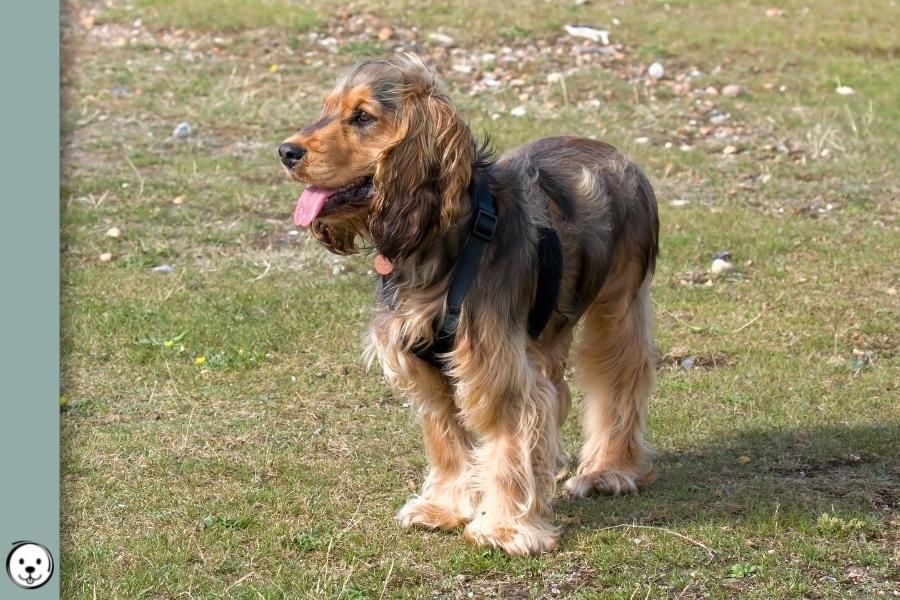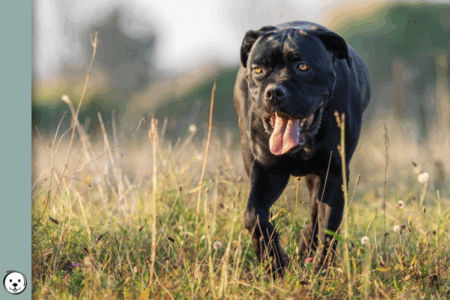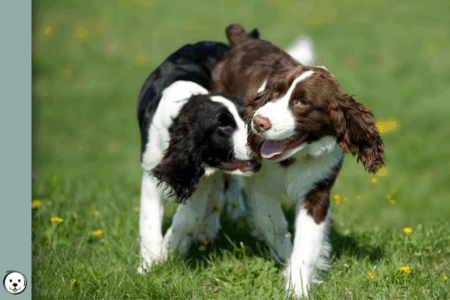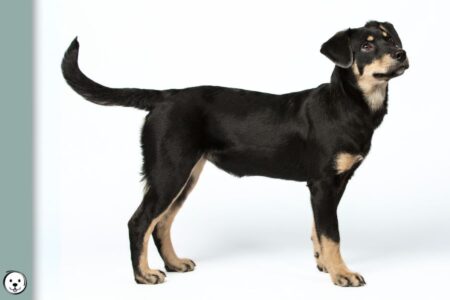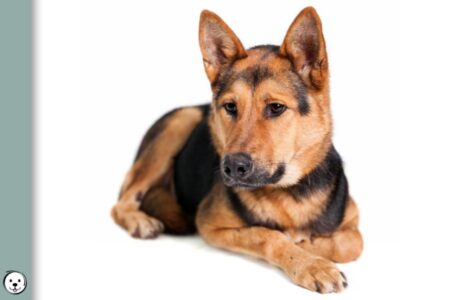The eH allele at the E locus causes an interesting phenotype in Cocker Spaniels that either resembles a regular sable pattern or is described as a dirty red color pattern.
What is Cocker Sable?
The eH variant found at the E locus modifies any base coat color pattern by partially inhibiting eumelanin production. It causes a pattern to have way less eumelanin than expected.
To give you an example, this puppy should be solid black:
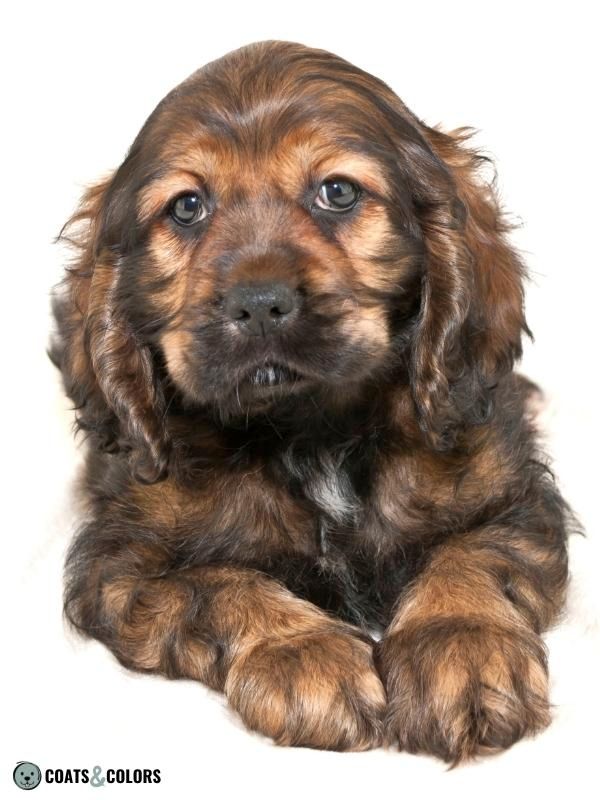
The effect is very similar to northern domino (eA) and sighthound domino (eG). However, cocker sable (eH) has a much stronger impact on a pattern compared to the other domino alleles.
English Cocker Spaniels are fixed for tan points (at/at), they don’t come with a real sable pattern (ky/ky Ay/-)[2]. But in dominant black dogs (KB/-), the eH variant causes a very sable-like phenotype.
For this reason, Cocker folks decided a long time ago to use “sable” as a breed term for KB domino. It very much looks like sable, and people back then didn’t know they dealt with a unique mutation.
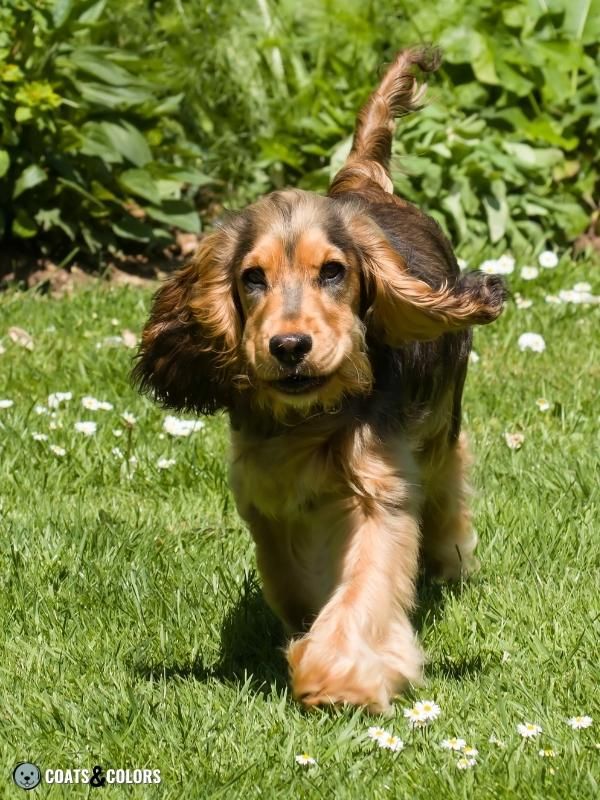
Cocker sable is expressed as a sable-like pattern on dominant black dogs with a hidden tan point genotype (KB/- eH/- at/at). These dogs should be solid dark in all their pigmented areas.
But their domino variant causes a modified pattern with way less eumelanin. It simultaneously promotes pale hair roots and drastically extends tan areas in the pattern.
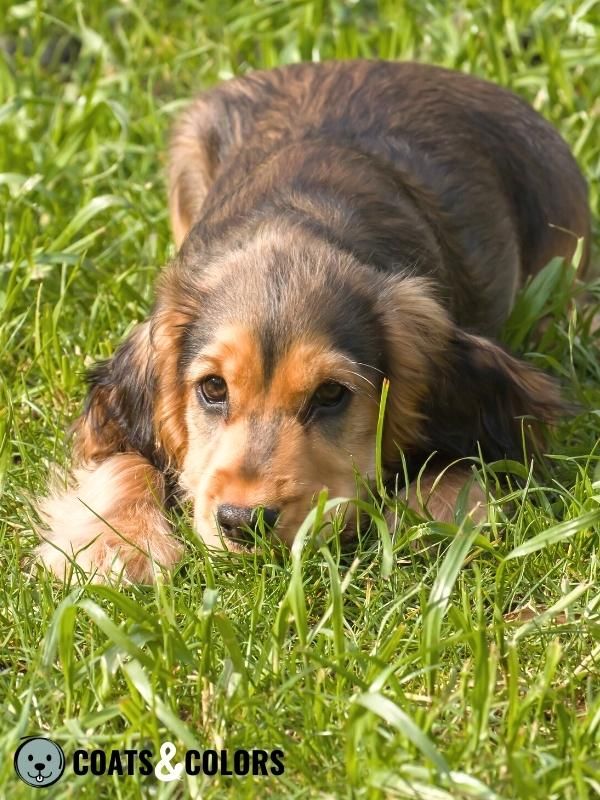
Domino can also affect patterned dog. On dogs with classic tan points (ky/ky eH/- at/at), the domino variant causes a phenotype with residual black shading on a mostly red coat, known as dirty red.
Cocker Spaniel domino is considered an old but very rare coloration. The mutation behind this pattern is unique to Cocker Spaniels and seems to have been in the breed for about 100 years. However, most breed clubs consider sable a non-standard color, only some breeders try to keep this color alive.
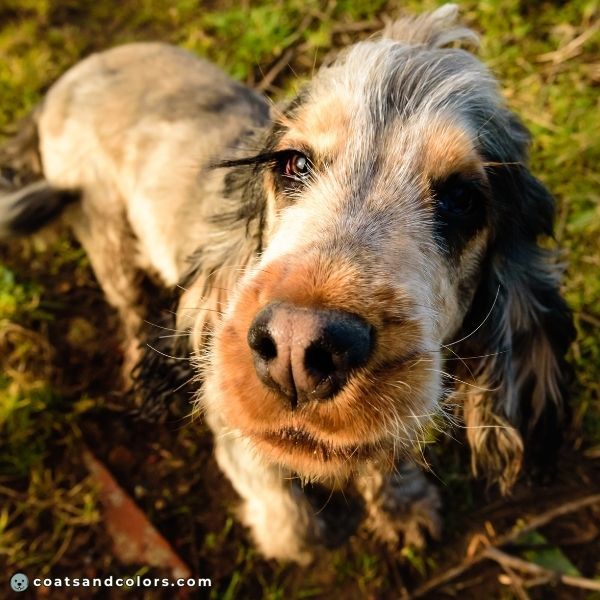
The eH allele
Pigment cells have the ability to produce either eumelanin or phaeomelanin. The E locus is part of the pigment type switch system that causes pigment cells to produce one pigment type or the other.
Cocker sable is caused by the eH variant (officially eH(D84N) or eHypostatic). This allele reduces eumelanin expression which automatically extends phaeomelanin in any given base pattern.
The eH allele is recessive to melanistic mask (Em) and wild type (E), but dominant over recessive red (e). Its relationship to ancient domino alleles (eA) or grizzle domino (eG) hasn’t been identified yet.
Since it shows a stronger eumelanin-reducing effect, I will put it closer to e than to E:
Masked (Em) or normal (E) patterned dogs can be carriers of the sable trait (Em/eH, E/eH). But all Cocker Spaniels that express a sable or dirty red pattern are eH/eH or eH/e.
Some companies offer testing for the eH variant. But there are no scientific studies and hardly any information that describes the mode of inheritance and expression of sable patterns in Cocker Spaniels.
Update 2024: The study on the eH variant‘s ability to produce partial recessive red phenotypes has finally been published! You can find the study here.
eH Domino Patterns
The eH variant causes a partially inhibited eumelanin production.
It can modify any coat pattern a Cocker Spaniel would normally have.
All domino patterns can occasionally produce a lighter stripe on the nose.
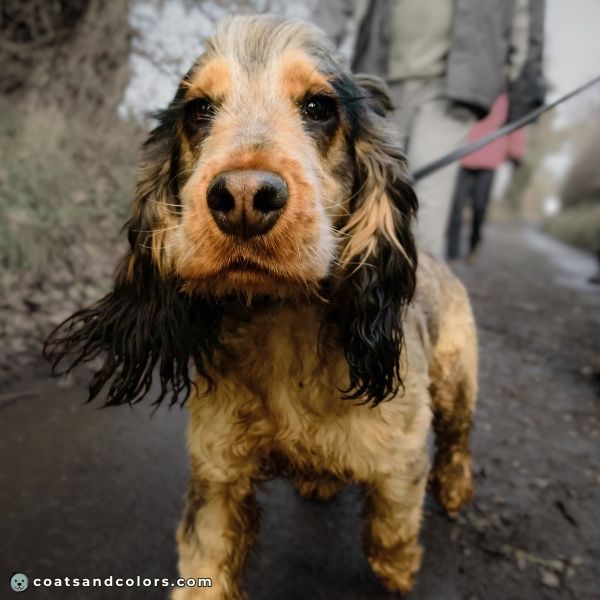
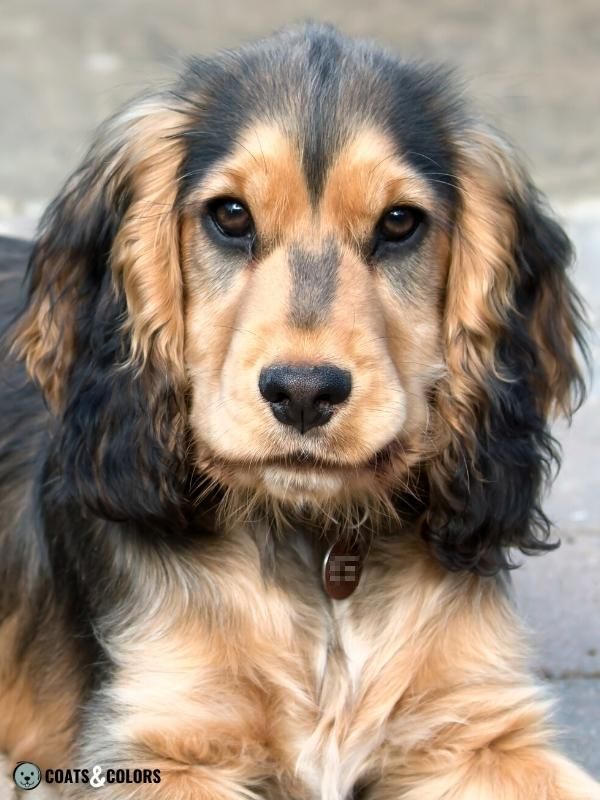
Cocker Spaniels don’t have that many pattern.
They are fixed for a tan point genotype at the A locus (at/at). And the K locus can either enable tan point expression (ky/ky) or produce a solid dark coat (KB/-).
So the only known patterns are tan point cocker domino (“dirty red” in eH/- ky/ky at/at dogs) or KB cocker domino (“cocker sable” in eH/- KB/- at/at dogs)[1].
In theory, there could be even more domino patterns in Cocker Spaniels.
Recessive black (a/a) occurs in both English Cocker Spaniels and American Cocker Spaniels and even regular sable (Ay) occurs at a very, very low frequency in American Cocker Spaniels[2].
Cocker Sable
KB dogs with cocker domino and tan point genotype at the A locus (eH/- KB/- at/at) express a pattern that resembles a shaded sable pattern.
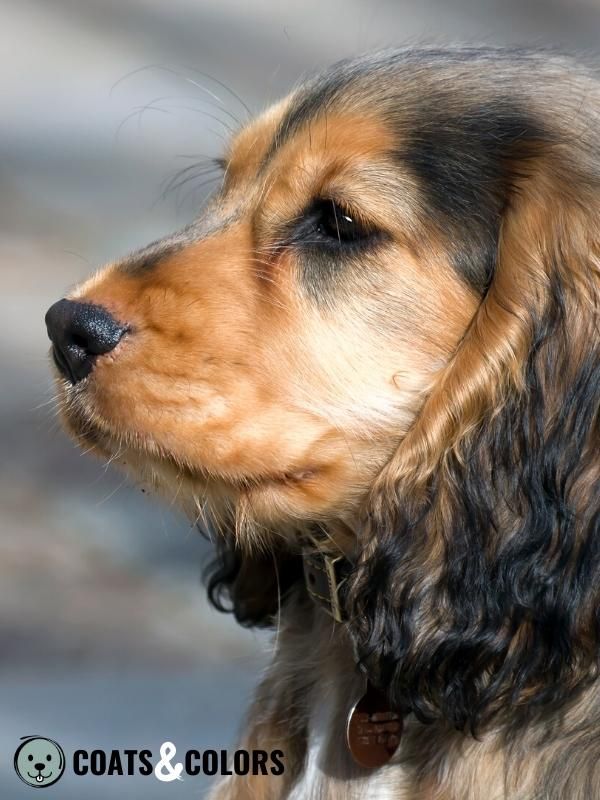
Affected dogs express a mostly cream- or tan-colored face with dark pigment on their forehead, ears, neck, and back. Some face markings like a widow’s peak or a darker nose bar are very common.
Cocker sable also gives phaeomelanin markings on the dog’s legs and belly[3].
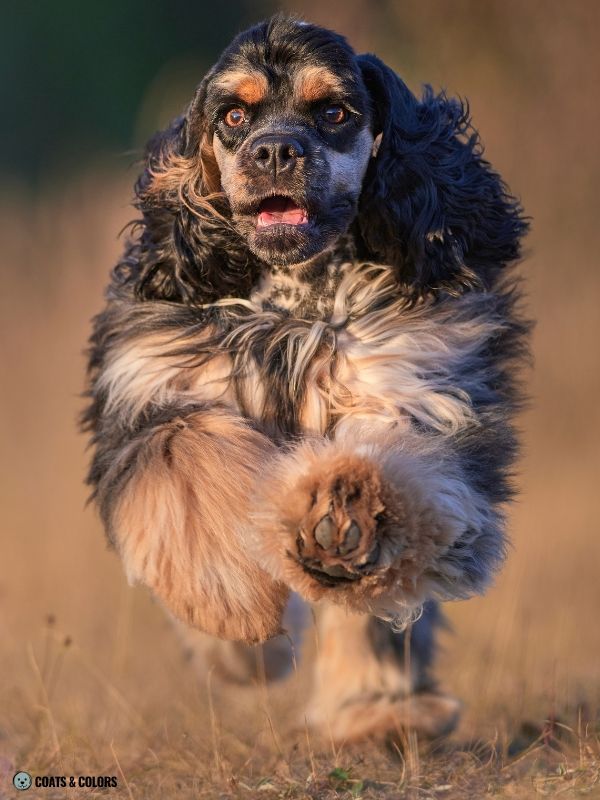
Unlike domino patterns found in other breeds, eH does not appear to lighten phaeomelanin color quite as much. Many “sable“-colored Cocker Spaniels exhibit a fairly normal golden pigment color.
A Cocker sable pattern may be partially hidden by piebald spotting, with many Spaniels expressing ticking and roan. This is called sable roan in affected dogs.
Dirty Red
A normal tan point pattern can be modified by eH to express as a mainly red coat with dark hair tips.
This is known as “dirty red” in the Cocker Spaniel breed.
Again, the eH variant removes lots of the eumelanin from the original pattern.
The synthesis of eumelanin can be reduced to such an extent that it gives an almost solid “golden sable” phenotype, which may almost resemble a recessive red coat color.
Learn More
Links
[1] Paw Print Genetics: Eh (Sable, Cocker Spaniel Type).
[2] Dreger DL, Hooser BN, Hughes AM, Ganesan B, Donner J, Anderson H, et al. (2019). True Colors: Commercially-acquired morphological genotypes reveal hidden allele variation among dog breeds, informing both trait ancestry and breed potential. PLoS ONE 14(10): e0223995. https://doi.org/10.1371/journal.pone.0223995
[3] Honkanen, L., Loechel, R., Davison, S., Donner, J., & Anderson, H. (2024). Canine coat color E locus updates: Identification of a new MC1R variant causing’sable’coat color in English Cocker Spaniels and a proposed update to the E locus dominance hierarchy. Animal Genetics. https://doi.org/10.1111/age.13398
Image Credits
© Martin Tosh/canva.com
© Martin Tosh/canva.com
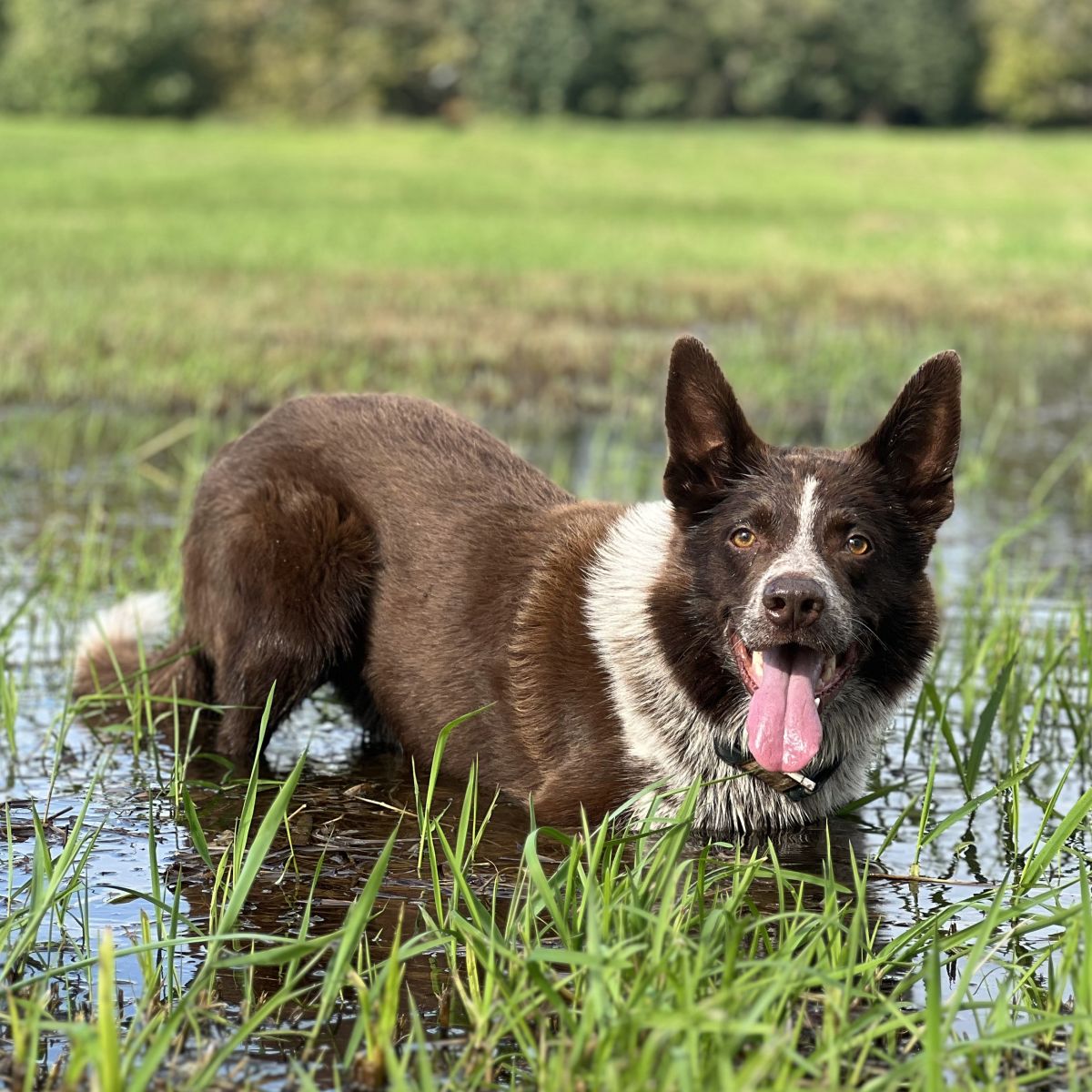
Hi! I’m Steffi. I am a biologist and a big time dog nerd. You are curious about coat color genetics? You’ve come to the right place! Read more.

